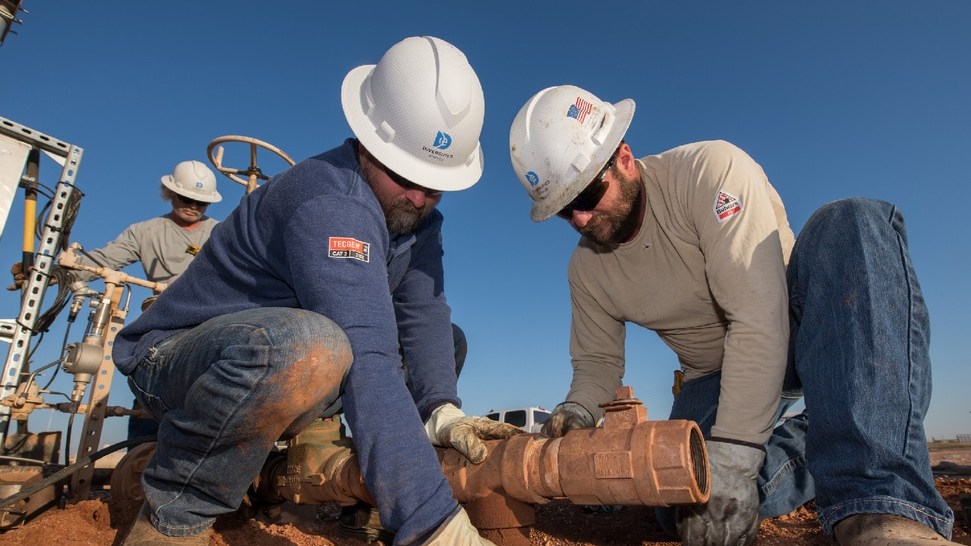Diversified Energy Aims for Recovery with US Listing
Seven years after joining London’s junior market, Diversified Energy distinguished itself from smaller oil and gas enterprises by promising lucrative returns to investors, fueled by consistent revenue from gas wells previously owned by major energy companies.
Initial skepticism from analysts did not deter the company, which successfully increased its market valuation from approximately £70 million at its Aim debut to £1.1 billion by 2022.
However, in March 2023, Diversified Energy, now listed on London’s main exchange, reduced its dividend in recognition of the challenges in managing shareholder distributions, significant debt obligations, and ongoing acquisitions.
This adjustment followed scrutiny from US Congress regarding the company’s environmental responsibilities, particularly allegations of underestimating the costs associated with well clean-up post-production.
As a result, investor confidence has waned, leading to a nearly 70% decline in share value over the past two years, ultimately resulting in its removal from the FTSE 250 during the latest index reshuffle. On Tuesday, the stock slipped further by 25½ pence, marking a decrease of 2.8% to 894½ pence.
Despite cutting the dividend to ease financial strain, the company’s shares are currently the most shorted on the London exchange, indicating continued investor pessimism.
Founded in 2001 by Rusty Hutson Jr., who initially purchased an old gas well in West Virginia, Diversified has since grown to become the largest gas well owner in America, boasting over 70,000 wells in the southern and Appalachian regions. The company has invested about $2.6 billion since 2017, capitalizing on a trend among US producers to offload older wells.

Diversified Energy’s strategy involves enhancing the profitability of existing wells at a lower cost than previous owners, thereby generating sufficient cash flow to support shareholder dividends, manage debt, and fund the decommissioning of aging wells, while also reinvesting for growth.
Market analysts remain skeptical about the company’s capacity to meet these demands. Hutson attributes the decline in share prices, once appealing to income-focused investors, to significant outflows from UK funds that were forced to divest.
“We became collateral damage in an exceedingly challenging market over the last two years,” Hutson stated.
By March, Diversified had to adjust its quarterly dividend from 87.5 cents per share to 29 cents as the yield approached concerning levels of nearly 30%. Funding through the issuance of new shares for $1.3 billion between 2017 and 2022 also increased the total payout.
With the recent listing on New York stock exchanges, Hutson felt compelled to act: “We predicted that with the New York listing, investors would likely question our sustainability if faced with such a high yield.”
However, negative perceptions continue to linger, with analysts cautioning that a reckoning may be imminent for the company. Despite generating $219 million in free cash flow last year, this amount does not account for debt repayments, dividends, or additional acquisitions.
Analysts suggest that even with a reduction of $110 million annually from the dividend cut, the company faces a delicate balancing act. Peel Hunt estimates that Diversified will only have $29 million in leftover cash this year, increasing modestly to $41 million next year and $58 million in 2026, which does not include potential acquisition funds.
Currently, Diversified is focused on decreasing its leverage and enhancing shareholder value following three significant transactions this year.
The firm has explored several funding avenues, including equity markets, share-for-assets exchanges, and debt financing primarily obtained through asset securitization. After acquiring gas assets from Oaktree Capital Management for $410 million in June, net debt rose to $1.6 billion, approximately 2.8 times its adjusted earnings before interest and taxes, exceeding its target range of 2 to 2.5 yet still compliant with debt covenants.
Hutson aims to restore leverage ratios to target levels by next year, expressing confidence in the dividend’s sustainability due to 80% of its debt being fixed-rate. The company’s debt is structured for gradual repayment over about a decade, minimizing the issues associated with lump-sum maturities. The current dividend yield, approximately 10%, remains among the highest in the industry.
Nonetheless, fundamental challenges persist. A January report from Snowcap Research claimed that Diversified has underestimated the costs tied to well decommissioning.
This report contested the company’s assertion of a stable production decline rate of 10%, estimating a higher annual drop of 18%. Furthermore, it deemed the company’s projected average lifespan of its wells, extending to 2095, as overly optimistic. The undiscounted cost for plugging wells stood at $1.96 billion in June, dropping to a discounted present value of $507 million.
Diversified challenged the Snowcap report, characterizing it as inaccurate and designed to undermine stock performance favoring short positions.
The company emphasized its ownership of an asset retirement firm, allowing better control over costs and compliance with audits regarding asset retirement obligations. It reaffirmed a successful track record in safely and effectively retiring wells.
Despite concerns over underestimating clean-up costs, four Congressional members expressed their worries in a letter to Hutson, emphasizing the potential environmental impact concerning the vast number of wells it controls.
Hutson clarified that the Congressional inquiry stemmed from a small faction of Democrat representatives, not constituting any formal investigation. He reassured that thorough processes exist in monitoring methane emissions and that the company had satisfactorily addressed the inquiries raised.
With shares struggling to recover, Hutson believes that the New York listing could be pivotal in regaining investor interest.
“The UK markets have proven to be extremely challenging for our sector. We’re optimistic that, through proper education on our operations and value proposition, the US market will eventually recalibrate our stock accordingly,” he concluded.




Post Comment